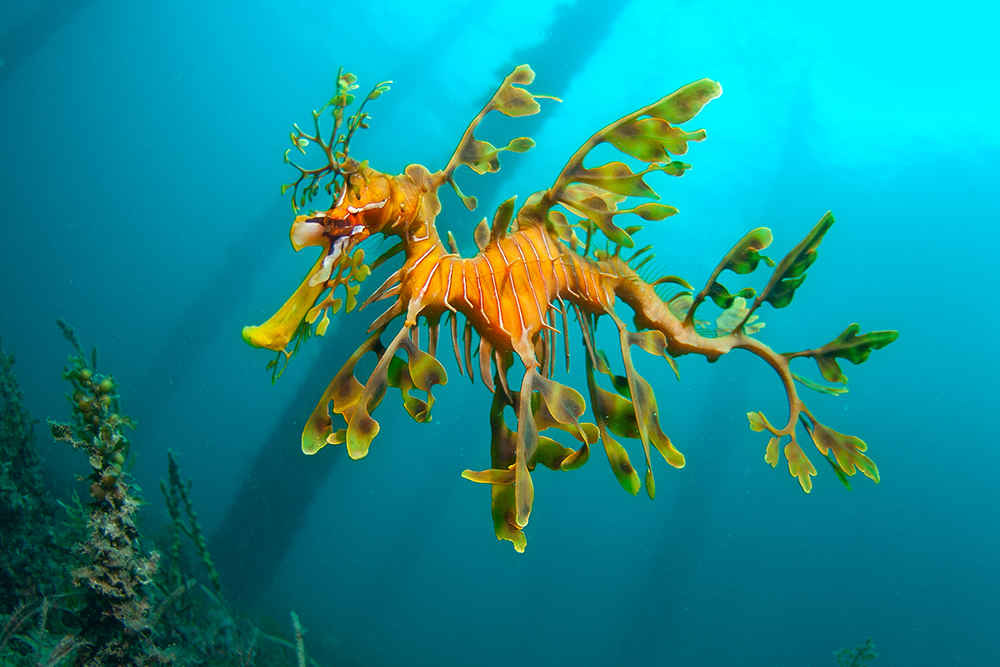The cold waters of Tasmania might seem like a far cry from Indonesia’s treasured critter-dive locations, but for those willing to brave the cold, they hold some amazing treasures. Put on your drysuit, grab your camera, take the plunge, and you just might discover some of the rarest fish on the planet.
Tasmanian dive sites are home to seadragons, multiple seahorse species, but the critters that will convince me to shiver my ass off are the handfishes. Handfish are relatives of the better-known frogfishes, which means to have a similar fishing lure (adapted dorsal fin spines) on top of their head. As the name implies, they also have adapted pectoral fins which resemble hands. Like their frogfish cousins, handfish spend most of their life on the seafloor, waiting for unsuspecting prey to swim by and gobble up.
There are 14 known handfish species, all of which are found only in southern Australia. Unfortunately, 8 out of the 14 species are endangered. One species, the Smooth handfish (Sympterichthys unipennis) even has the unfortunate distinction of being the first marine fish to have gone extinct.

Other handfish species are not doing much better and might follow in the Smooth Handfish’s unfortunate footsteps all too soon. The Red Handfish (Thymichthys politus), Spotted Handfish (Brachionichthys hirsutus), and Ziebell’s Handfish (Brachiopsilus ziebelli) are all considered to be Critically Endangered. The fate of the Ziebell’s handfish in particular is looking very grim since no confirmed sightings have been reported in 14 years 😦
The sad state of handfish is ironic as, not unlike other endangered or extinct species, they used to be very common. So common in fact, that less than 50 years ago, the local university used them as a model animal for dissections in zoology classes! Early Tasmanian settlers and convicts even considered eating them because they were found everywhere and were easy to collect, but decided against it because they were too small (less than 10cm).
So what went so wrong that we now fear they might go extinct? The main reason for their issues is habitat destruction and degradation. The combined effects of destructive fishing pressures, coastal development, increased pollution and silt runoff means that much of the places they used to thrive are no longer suitable. To add insult to injury, the waters home to handfish have been invaded by the Northern Pacific Seastar (Asterias amurensis). There are now millions of them in prime handfish habitat, and they love to eat handfish eggs and the stalked ascidians the Spotted handfish lay their eggs on. Without a proper place to attach their eggs, the handfish can’t reproduce anymore, with a crashing population as a result.

Luckily for the handfish, a dedicated group of people are trying their very best to turn its fortunes around. The Handfish Conservation Project is a team of researchers and conservationists that is working hard to save these amazing species. The project has mapped out recovery plans, does research on handfish to better understand how we can help them, and has a citizen science portal to report handfish sightings. In a very cool recent project, science and art were combined successfully to make ceramic egg habitats that are unpalatable for the invasive seastars, but acceptable for handfish to lay eggs on.
If, like me, you want to help conserve these fantastic critters, there’s a few things you can do. If you see Red or Ziebell’s handfish, please report it here, ideally accompanied by pictures. If you can and want to, you can donate to the project here. If you are really keen, you can even name an endangered handfish! For more general info on handfish conservation, the Handfish Conservation Project website is a good place to start.








